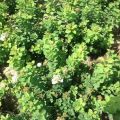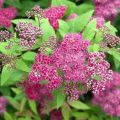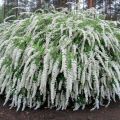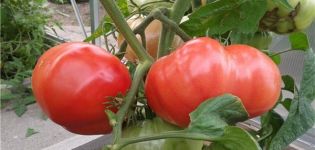Description and the best varieties of sulfur spirea, the rules of planting and care in the open field
In landscape design, plants are often used that change the general green background of plantings, decorate areas with exotic shades. Spirea (Spiraea) gray fell in love with flower growers for the exquisite ash tone of foliage, abundant flowering, beautiful bush shape. Perennial shrub is distinguished by frost resistance, unpretentiousness. Consider what conditions are necessary for spirea for life, how to grow a flower on a site.
Description of gray spirea
Spiraea cinerea is an ornamental shrub, a hybrid obtained by crossing two natural species of spirea. Belongs to the Rosaceae (Pink) family. The size of the bush is 0.9-2 meters. The branches are flexible, densely covered with leaves, so they bend in arcs to the ground, giving the bush the shape of a ball. The foliage is lanceolate, gray-green, slightly lighter from the bottom. Flowers are collected in inflorescences (scutes) that form along the entire length of the branches. During the flowering period, white flowers completely hide the leaves, the bush turns white, for which the spirea is popularly called the "bride".
The buds bloom in May, flowering lasts 30-40 days. Neat ash-colored leaves give the spirea a sophisticated look even after flowering.
Reference: flower growers love gray spirea for decorativeness, which lasts the whole season. Ash-green foliage adorns the garden, a bush with bent branches has the shape of a sphere, flowering lasts a month.
Types and varieties
Florists cultivate 2 hybrids of sulfur spirea, which are distinguished by their beauty and ease of cultivation.
Grafsheim
The Grefsheim variety has a lush shrub with reddish-brown branches. The foliage is grayish-green, yellow in autumn. The shrub turns into a golden ball. Even in winter, the spirea looks decorative - numerous branches do not stick out with bare skeletons, the bush retains a shape that corresponds to the varietal description.

Spirea gray varieties Grefsheim is famous for its numerous umbrella inflorescences, which sit close to each other, located from the ground to the end of the branches. The color of the flowers is white, white-pink, red. Small flowers (up to 1 centimeter) are densely grouped into inflorescences.
Spirea Grefsheim exudes a pleasant aroma during the flowering period, collects a lot of bees. The honey plant is specially planted to attract insects.
Graciosa
Graciosa bushes with flexible long branches look more spreading, more bend towards the ground. The inclined and curved stems are like the jets of a fountain. Graciosa blooms with white fragrant flowers in May-June.After flowering, the bush retains an exquisite appearance. The Arguta variety (sharp-toothed) with green foliage is very similar to the gray spirea.
Advantages and disadvantages
Florists find a lot of valuable qualities in gray spirea:
- decorativeness throughout the year;
- frost resistance - the tips of the branches that are frozen are cut off, this does not affect the beauty of the bush;
- easy reproduction;
- fast growth;
- long flowering period;
- does not need clean air, grows in conditions of gas pollution.
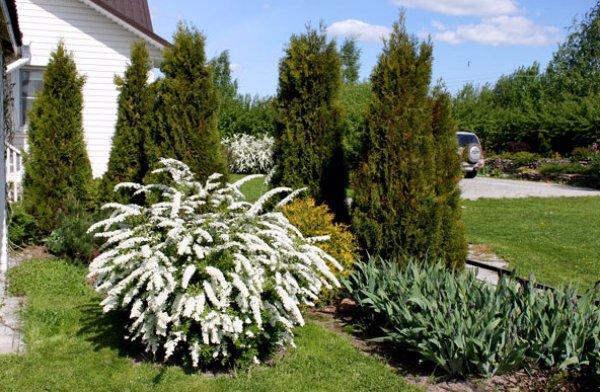
The plant releases phytoncides, itself improves the air on the site. Florists assure that spirea has no shortcomings. Note that a sunny place should be allocated for the bush, pruning should be carried out regularly to maintain ventilation and stimulate flowering.
The specifics of growing
Gray spirea is distinguished by a non-capricious disposition, flower growers note the plant's unpretentiousness and ease of care. When planting, it is important to remember that the branches grow up to 15-25 centimeters a year, a small seedling will soon turn into a shrub, which can reach 3 meters in girth. This must be taken into account when choosing a planting scheme, planning to use it for a hedge or next to other plants.
When to plant?
The best time for planting in open ground is considered the beginning of autumn - cloudy rainy weather. If the seedling is planted in spring, you need to catch it before bud break. Spiraea takes root easily, growers believe that a seedling from a pot with a lump of earth will take root when planting at any time, the main thing is to water and slightly shade the young sprout from the sun first.
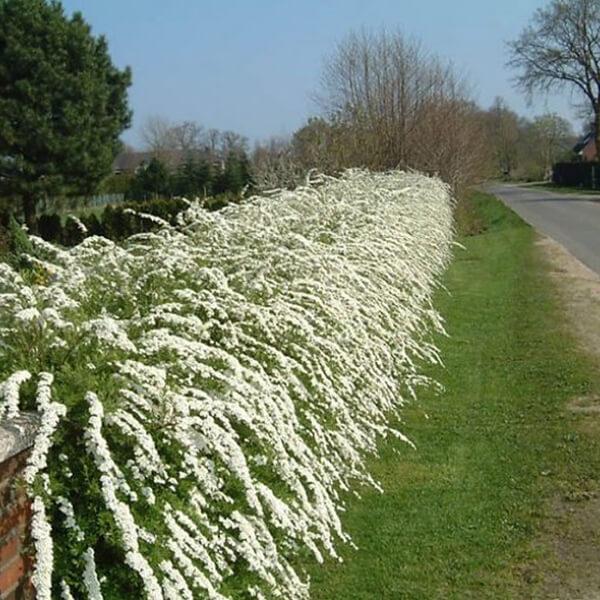
How to plant?
Spirea, growing in the sun, has a symmetrical lush bush, blooms profusely and for a long time. For shrubs, it is better to choose open, sunny places, allowing only slight shading. Heavy soil is eased with humus, dry foliage, peat. The pit is prepared a few days before disembarkation. A drainage layer of small stones is laid at the bottom to ensure the escape of excess water. The size of the pit is 40-50 centimeters.
A layer of prepared fertile soil is poured over the drainage. The roots of the seedling are pruned, too long and damaged areas are removed. A young sprout is placed in the center of the pit so that the growth point coincides with the surface of the soil, and covered with soil, tamped. Spill water (bucket) and, if necessary, level the seedling in the pit. The soil surface is mulched with organic matter.

Flower Care Tips
During the growing season, the spirea must be properly looked after, then the size of the shrub will increase and the flowering will be long. Care includes the usual set of activities - watering, fertilizing, pruning.
Watering
Recommendations for watering spirea:
- 10-15 liters of settled warm water are poured into the root circle.
- Water introduction mode - 2 times a month.
- At the peak of the summer season, in the absence of rain and high air temperatures, they are watered twice a week. Better to water in the evening or early morning.
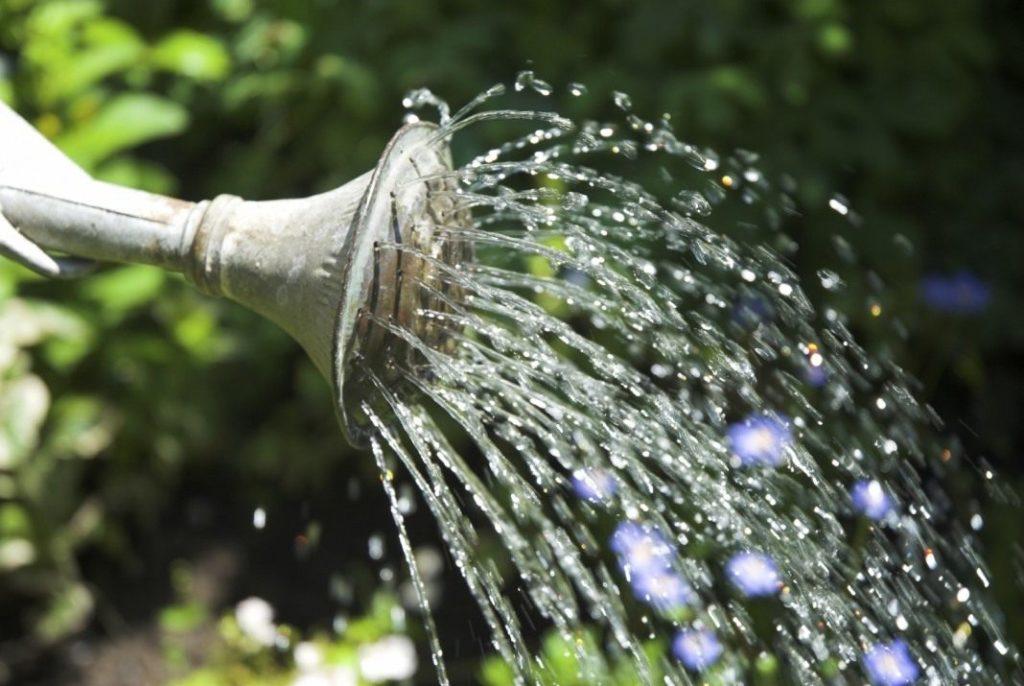
After the top layer has dried, the soil is loosened to a depth of 7-8 centimeters, being careful not to damage the roots. In the rainy season, watering is reduced - the spirea does not need an excess of moisture, as mold and root rot can develop. Weeds are removed regularly.
Top dressing
The first time the spirea is fed after spring pruning, to ensure the growth of branches and green mass. Diluted manure or bird droppings are applied in combination with superphosphate (8-10 grams per bush). Secondary dressing is done at the beginning of budding, potassium-phosphorus-nitrogen complex (Kemira Universal) is added.
once fertilized as part of the pre-winter preparation - complex fertilizers and organic matter.
Pruning features
The spirea bush grows quickly, to preserve the decorativeness and health of the plant, several types of pruning are used:
- Spring (main). Dead branches, frostbitten tips, diseased damaged parts of the bush are cut out.
- Decorative.It is carried out in early spring - the shoots are cut by a third, choosing one of 2-3. The bush is given the desired shape so that it delights in appearance.
- Anti-aging. A necessary measure for plants aged 7-10 years. The branches should be cut at the root, near the ground, leaving the lower dormant buds. In the future, young growth will go from the old root, the shrub will be completely renewed.
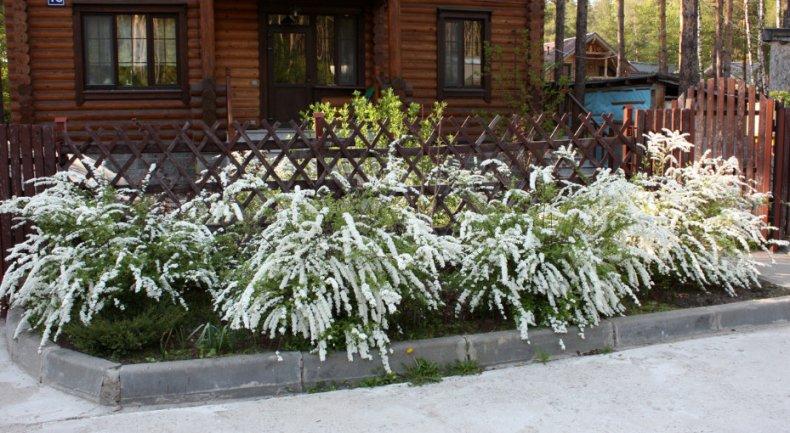
With formative pruning, only old shoots should not be removed, otherwise the young branches will not give abundant flowering.
Transfer
If it is necessary to transplant a spirea, a pit in a new place is prepared in 5-7 days. The main thing when transplanting is to remove the bush without greatly damaging the root system and preserving the earthen ball. Spirea is dug in from all sides, the plant is removed from the ground and transferred to a new place on tissue. An earthen ball with a bush is lowered into the hole, aligning the growth points with the soil surface. The plant is spilled with water with a dissolved growth stimulant (Kornevin). In dry weather, the bush is covered with a large piece of wet cloth for 3-5 days, constantly maintaining moisture.
Reference: the best time for a spirea transplant is the cool time of early spring, before the activation of the buds, or autumn, before the cold snap.
Preparing for winter
Spirea has a large margin of frost resistance. So that the root system does not freeze with a lack of snow, the soil around the plant in winter must be covered with a layer of mulch (peat, hay, foliage). The ends of the branches damaged by frost are cut in the spring.

Diseases, pests and prevention
A dense bush of spirea often becomes the prey of pests - aphids, spider mites, leaf rollers. For removal, insecticides are used in accordance with the instructions - Actellik, Etaphos, Karbofos, Akreks. With an excess of watering and in a rainy summer, fungal diseases can develop on the bushes - septoria, ramulariasis or others. The damaged areas of the bush are cut out, the spirea is treated with fungicidal preparations (Fundazol), Bordeaux mixture.
To protect the spirea from diseases and pests, they observe the watering regime, mercilessly cut out the excess of branches, preventing the bush from thickening. Spring treatment of the plant is recommended before the beginning of the growing season with Fitoverm.
Plant propagation methods
To preserve the maternal properties of the plant, the spirea should be propagated by vegetative methods. Delenki root easily, so even inexperienced growers can grow a young bush.
Seeds
Propagation of hybrid plants by seeds is not carried out.
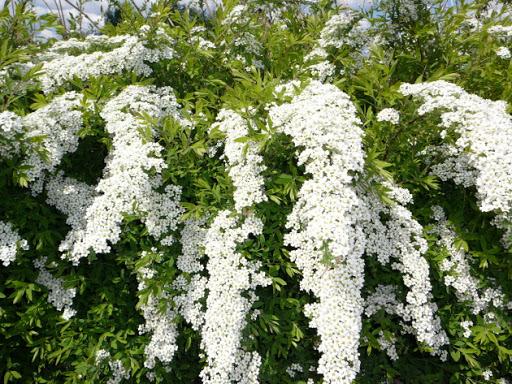
Cuttings
Cuttings are prepared from hard shoots immediately after flowering. Cut pieces of woody stem with 5-6 leaves. The cuttings are placed in a container with nutrient soil, covered with a transparent dome. Water and feed regularly. By autumn, they are transferred to open ground. A young seedling is carefully covered for the winter.
By dividing the bush
Division is used only in one case - if the bush needs a transplant. After removing the plant from the soil, the roots are freed from the soil. The bush with the help of a sharp knife is divided into 2-3 parts with strong roots and buds, the cuttings are planted in a permanent place.
Layers
The easiest and most convenient way to propagate spirea in your own area is layering. The branches of the bush themselves bend to the ground, they are pressed to the ground and pinned. Water, loosen the soil. After rooting, a seedling is dug up and transplanted to a prepared place. A single bush of gray spirea will perfectly decorate any area. Low flowers - tulips, daffodils, primroses, crocuses - look bright against its background. The shrub itself looks spectacular near coniferous crops. With the help of a number of bushes, the site is divided into zones, used for hedges.
Spirea feels comfortable in cold Russia, it is cultivated even in Siberia and the Kola Peninsula. Gray foliage is a great way to dilute the green color on the site, to add a special chic to the landscape.The bush is strewn with flowers for a whole month, after the petals fall off, the plant retains its beautiful appearance and still pleases the eye.





